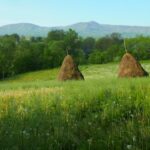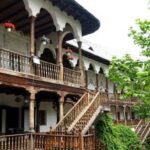Tuica (Romanian Țuică) in Maramures is big news. Our village, Breb, is full of fruit trees. The hills roll on for mile after mile, each a patchwork of narrow strips owned by individual families. Some grow grass for winter hay, some potatoes, cabbages, carrots, tomatoes and beans, but most grow fruit. In the harsh winters nothing grows and villagers rely on their stores of preserved fruit, vegetables and meat. What fruit doesn’t make it into the jam pots becomes tuica, our local home-distilled firewater, a fierce alcoholic brew that is the lifeblood of our village and of much of Romania. A post about making tuica, tuica sheds and life in northern Romania, our second home.
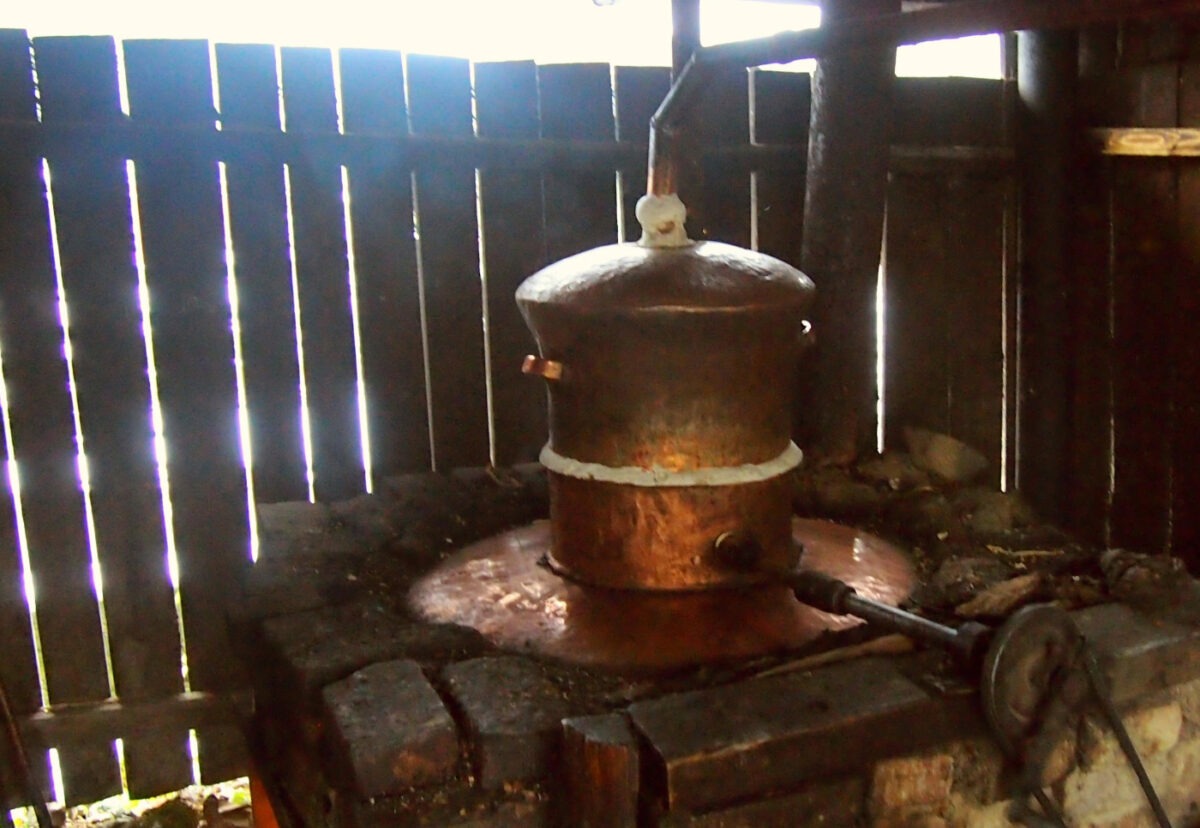
We are travel bloggers and we fell in love with Romania, so we grabbed the opportunity to spend a few years here, getting to know the people, places and customs, immersing ourselves in travel in Romania.
Tuica & Romania
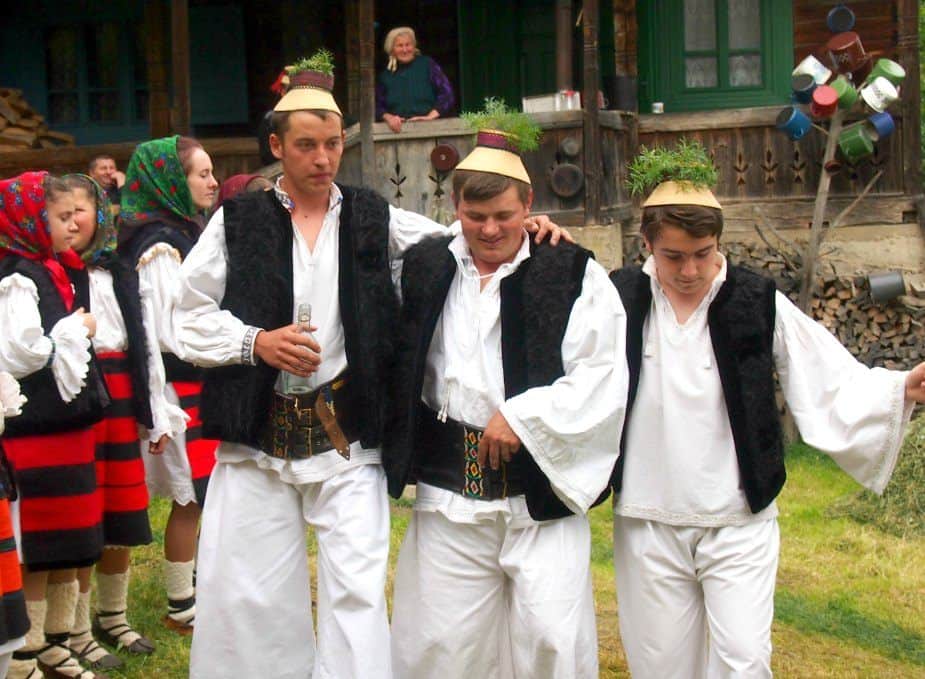
Making Tuica in Maramures, Romania
There is an incredible abundance of apples, pears and plums in Maramures, far more than the villagers could possibly eat.
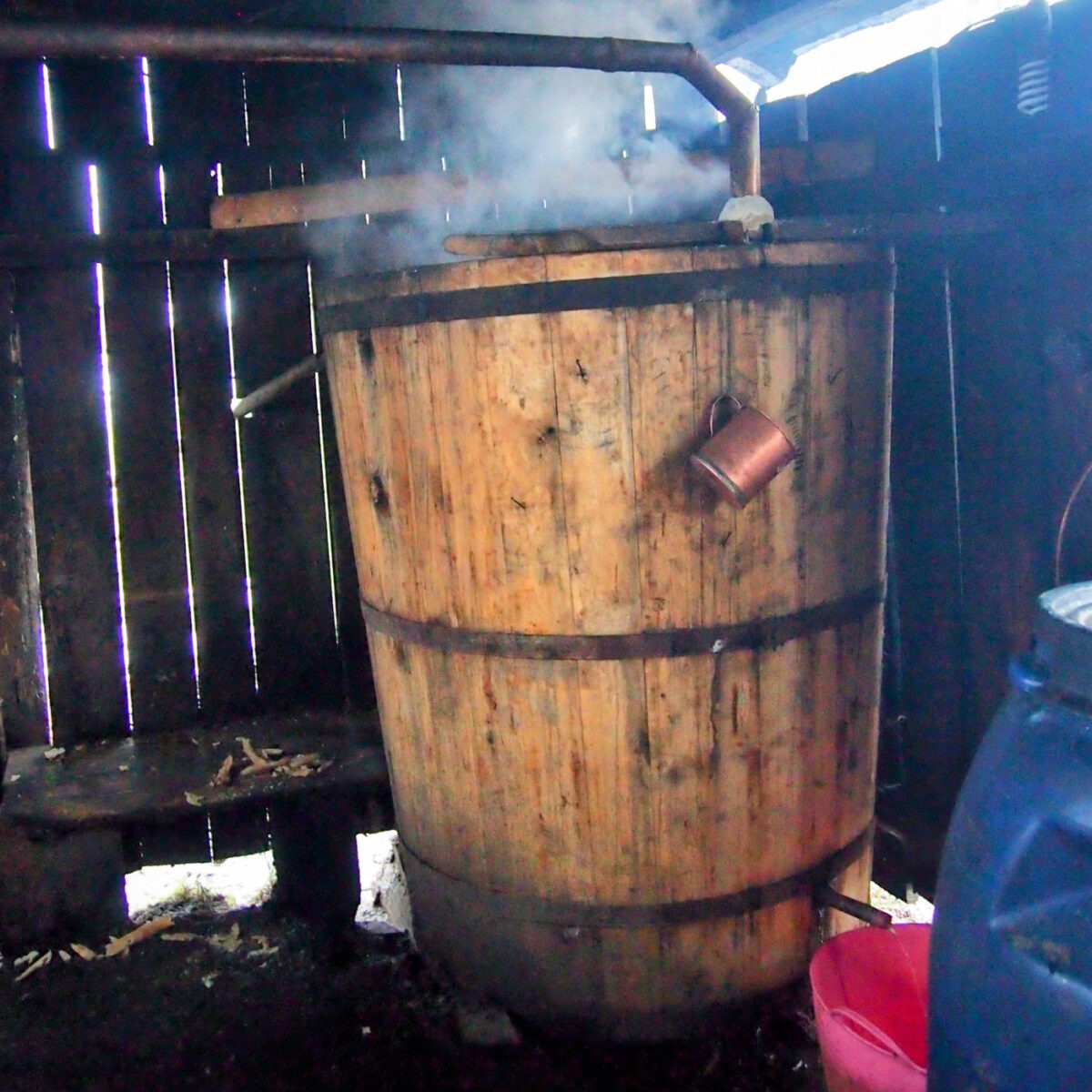
Some fruit becomes jam, some becomes juice but most become tuica (palinka or horinka).
Tuica is a clear, potent spirit, the home-made rocket fuel of the village.
It’s traditional, acceptable and (I think) legal, to make and consume as much of the stuff as you possibly can in one of the many little tuica sheds dotted around the village.
This one, we can see from our kitchen window.
In late autumn it runs round-the-clock with horses and carts stacked with firewood or fermented fruit turning up at all hours of the day and night.
There’ll be a warm glow from between the beams and an interminable plume of wood smoke rising.
Very happy villagers keep the fires going and just check that the tuica being made is coming out OK, 24/7.
Tuica Making Day and Lunch in the Tuica Shed
In late November at 4 am I was woken by mysterious sounds and voices outside.
Otherwise, the village was totally silent and pitch black, as it always is. A beam of torchlight skimmed along our window.
There was somebody out there, and they weren’t making any secret of it.
Back then, I was here without Chef, so I thought I’d better do something about protecting the kids myself.
I grabbed my own torch and nervously opened the front door to investigate.
“Buna!”
In the old wooden barn, our landlord and lady were hard at work, as always.
Breb people know nothing other than hard work.
The huge barrel of over-ripe pears was ready to go to the tuica shed, and 4am was when they were going to do it. It was about -6C out there.
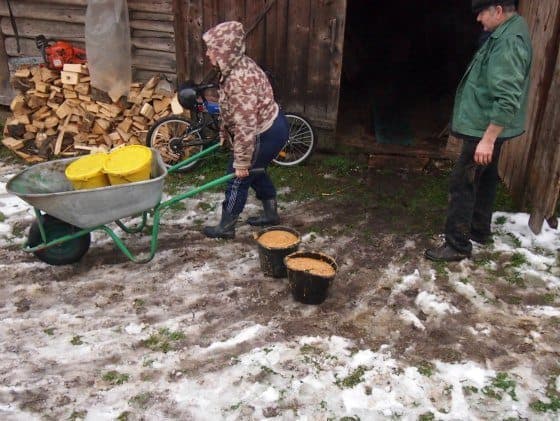
“Tuica!”
They were carting buckets of mush for most of the day, when they weren’t taking a chainsaw to huge tree trunks to keep the fire blazing under the still.
At noon they summoned us outside to join them for lunch in the tuica shed.
Sure, why not?
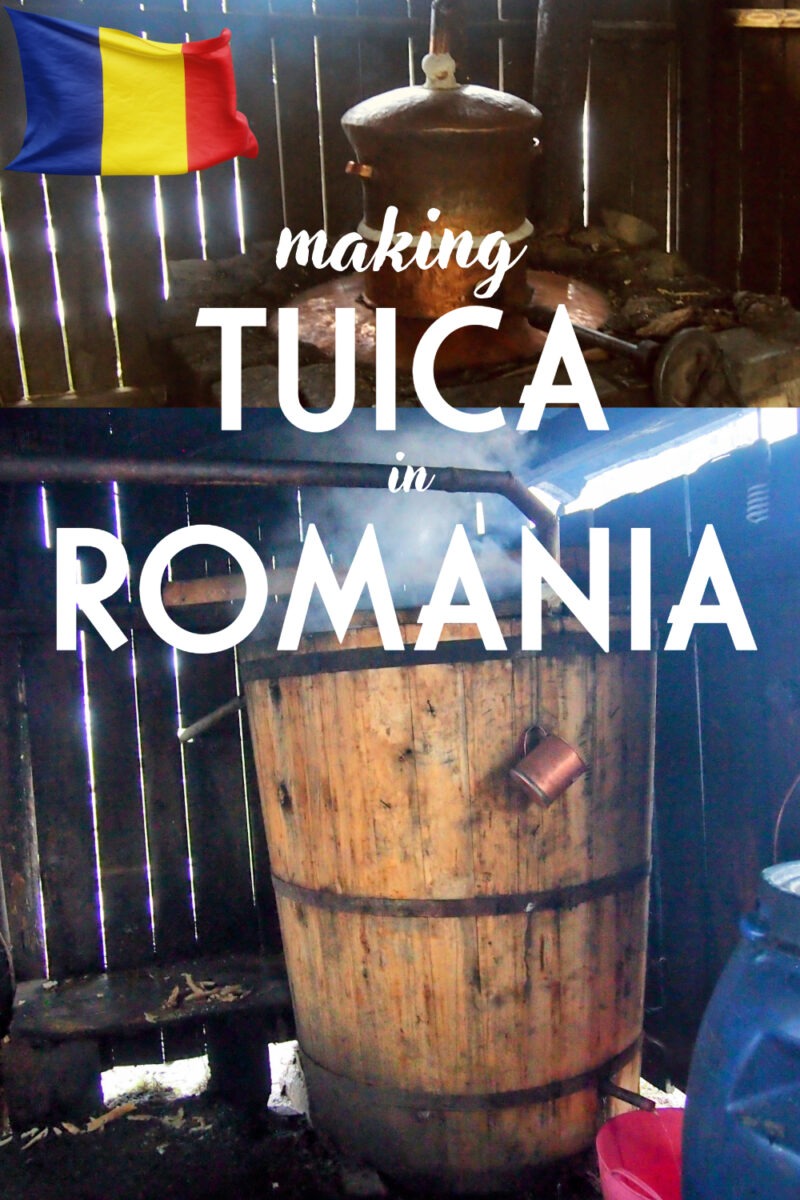
Would you save this to Pinterest?
How is tuica made?
How to make tuica? Tuica making is a very simple distillation of fermented fruit mush. Our villagers throw ripe and spoiled fruit into huge barrels all summer long, then just leave it for a few months for the natural bacteria and yeasts to turn the sugar into alcohol.
The fruit mush goes into the gleaming brass boiler. The alcoholic gases rise through the pipe to the cooling barrel on the other side of the shed.
All of the sheds are on the stream, the water for cooling comes directly from there.
The condensed tuica drips out of the bottom into the pink plastic bucket or into the brass mug for sampling. This was the strongest tuica I’ve ever tasted.
So what do tuica-makers eat for lunch?
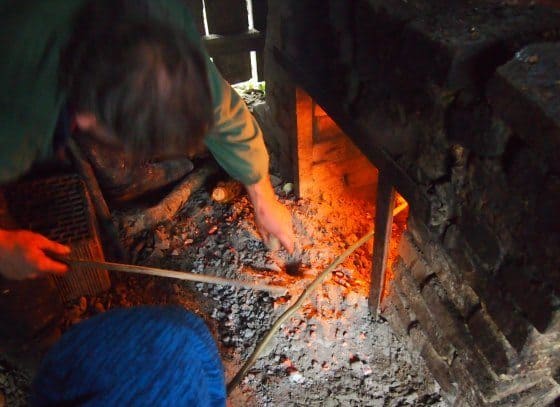
Those embers look like the perfect place to bake potatoes.
There are many tonnes of spuds stored under our house.
Maria grabbed a bucket full, gave them a quick wash in the stream and buried them in the ash.
Out came an onion, some sour cream, garlic and salt along with a large chunk of pig fat. They call it bacon, it’s not bacon as we know it.
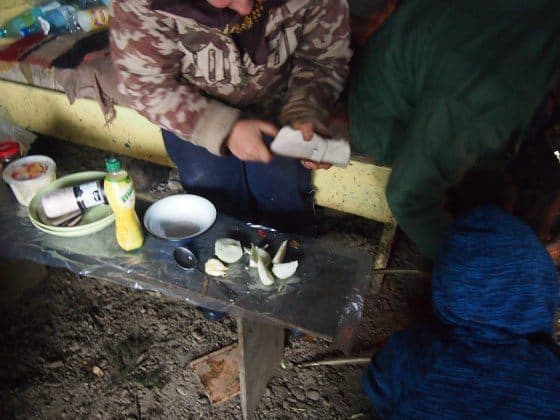
If you go to our post about back-yard pig butchery you’ll see how they peel it off the animal in huge slabs before hanging it in barns for winter.
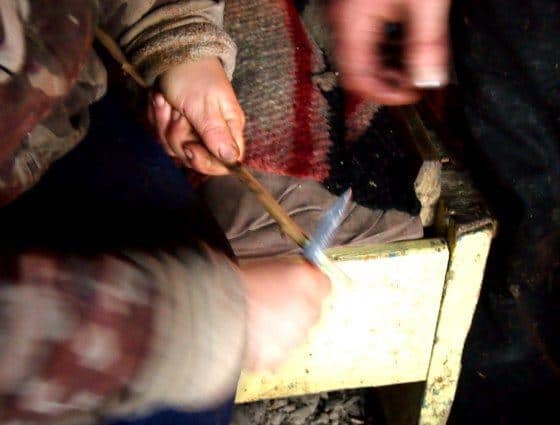
Whatever we were going to eat required several freshly sharpened sticks.
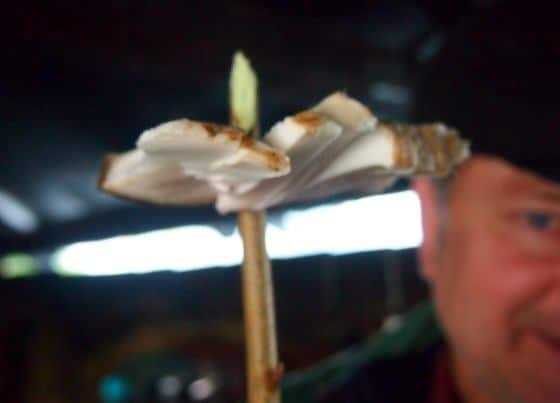
Ah, pig fat on a stick! Cut into fingers to cook evenly.
The kids were happy to help cook it but there was no way they were going to eat it. I hate to be rude, but we really don’t dig hot pig fat kebab.
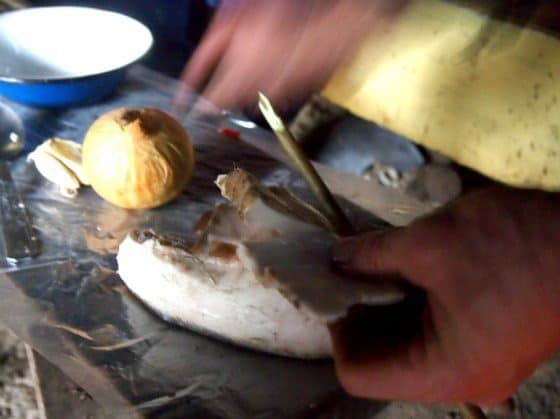
What’s next? Another stick, freshly stream-washed, to smash the garlic to bits. This went in the home-made sour cream along with salt to make something really delicious to go with the baked potatoes.
Time to rake the kartof out of the fire. Did you ever bake potatoes in a camp fire? Did you wrap them in foil? Did they come out cremated? Mine always did. These went in au-naturelle and came out cooked perfectly.
We sat in the shed contentedly munching for an hour or so.
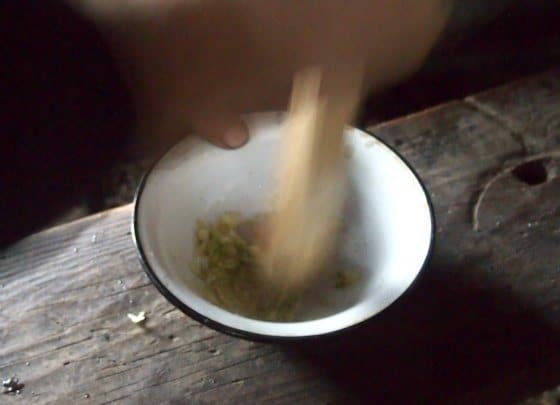
That’s the way life goes here, mostly it’s quiet but we’re constantly observing and learning. The unexpected is always so fascinating.
So really there’s not much more to tell about making tuica.
Our village has around 20 tuica sheds and in season each one operates round the clock.
In the dead of night you’ll see the warm glow from the cracks in the wooden doors and a constant stream of horse-drawn carts bring barrels of fermented fruit or yet more wood.
Each tuica shed is on a stream, natural running water cools the distilled alcohol.
The villagers produce an incredible volume of tuica, I’m sure they can’t drink it all.
If we help a neighbour with a lift to market or a trip to the doctors you can bet they’ll “pay” with a bottle of tuica. If you ever visit or village, Breb in northern Maramures and drop by our house to say hello you can guarantee we’ll have a few bottles lined up on the top shelf, just for emergencies. Do you need to go back to our Romania Travel Blog page? Click through.
If you'd like to hire a car during your stay, use this car rental comparison tool to find the best deal!
We also suggest you take a look at this company to get a quote for all kinds of the more tricky adventure or extended travel insurance.
Try Stayz / VRBO for an alternative way to find rentals on homes/apartments/condos in any country!





